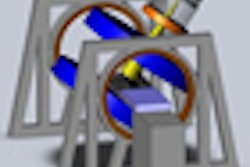Sunday, November 25 | 10:55 a.m.-11:05 a.m. | SSA14-02 | Room E451B
Because T2- and T1-weighted contrast-enhanced fat-suppressed MR images are equally suitable for scoring bone marrow edema, scanning time for patients suffering from the early onset of arthritis can be reduced, according to a Dutch study to be presented on Sunday.The evaluation of bone marrow edema in arthritis is usually performed using fat-suppressed T2-weighted images. In addition, postcontrast fat-suppressed T1-weighted images are routinely acquired for evaluating synovitis, according tto researchers from Leiden University Medical Center in the Netherlands.
"As bone marrow edema is visible on both of these sequences, we thought the T2-weighted series to be superfluous," said lead study author Dr. Wouter Stomp from the department of radiology. "Our results confirm this, showing that semiquantitative scores of bone marrow edema do not differ regardless of whether the T1- or T2-weighted images are used for scoring."
Stomp and colleagues studied 69 consecutive patients (mean age, 53 years) who had early arthritis symptoms for less than two years. Imaging of the wrist and metacarpophalangeal joints was performed on a 1.5-tesla extremity MRI system (GE Healthcare) with a standard protocol and scored by two independent observers with and without T2-weighted fat-suppressed images available.
The mean bone marrow edema score was 5.57 (range, 0-40) on T2-weighted MRI and 5.83 (range, 0-37) on T1-weighted MRI. The researchers found excellent interreader agreement for both MRI techniques.
"The main benefit for patients is shortened imaging time, reducing the standard arthritis MRI protocol by about 20% to 25%," Stomp said. "This is especially beneficial in arthritis patients who, due to their joint pain, may have difficulty staying in the same position for extended periods of time, and if you want to evaluate multiple joint areas in one imaging session."
Stomp and colleagues plan to apply the results of this study to evaluate the additional value of MRI in diagnosis, treatment, and prognosis in a large cohort of early arthritis patients. "In addition, we are further exploring possibilities to shorten the imaging protocol even more by determining the minimum set of sequences required and developing novel or alternative sequences," he added.


.fFmgij6Hin.png?auto=compress%2Cformat&fit=crop&h=100&q=70&w=100)





.fFmgij6Hin.png?auto=compress%2Cformat&fit=crop&h=167&q=70&w=250)











